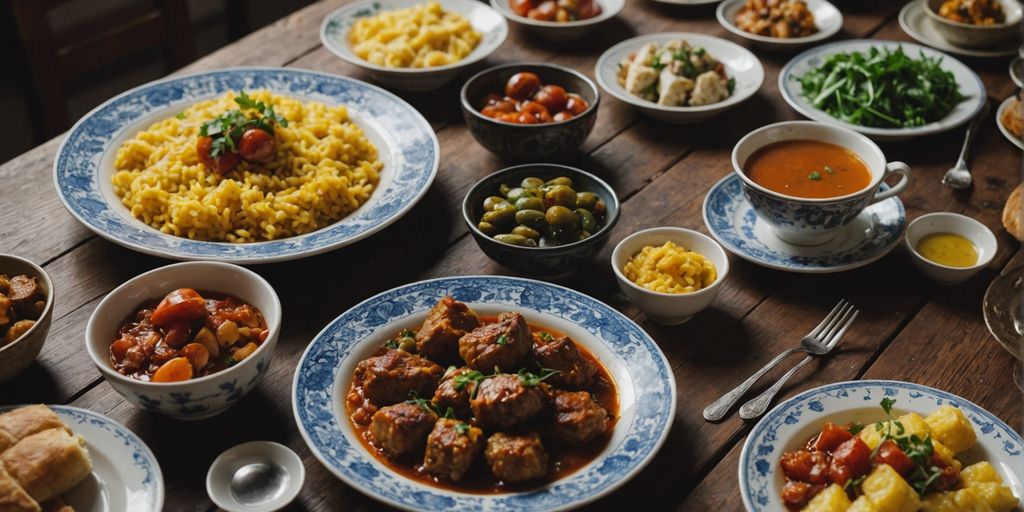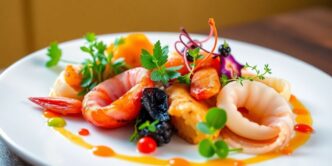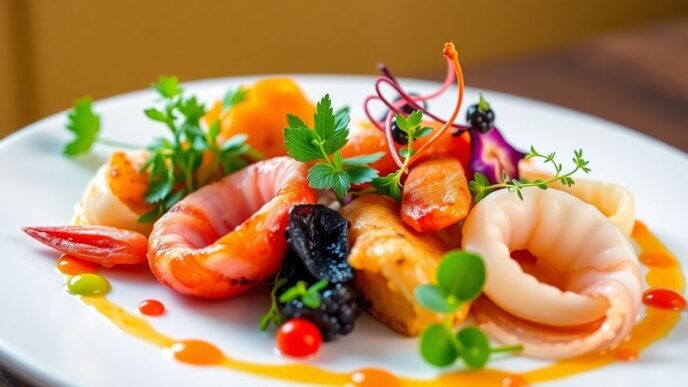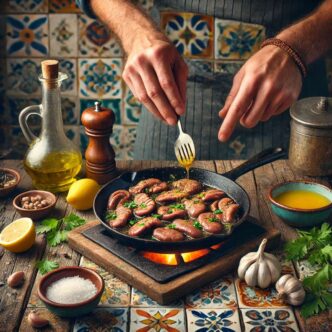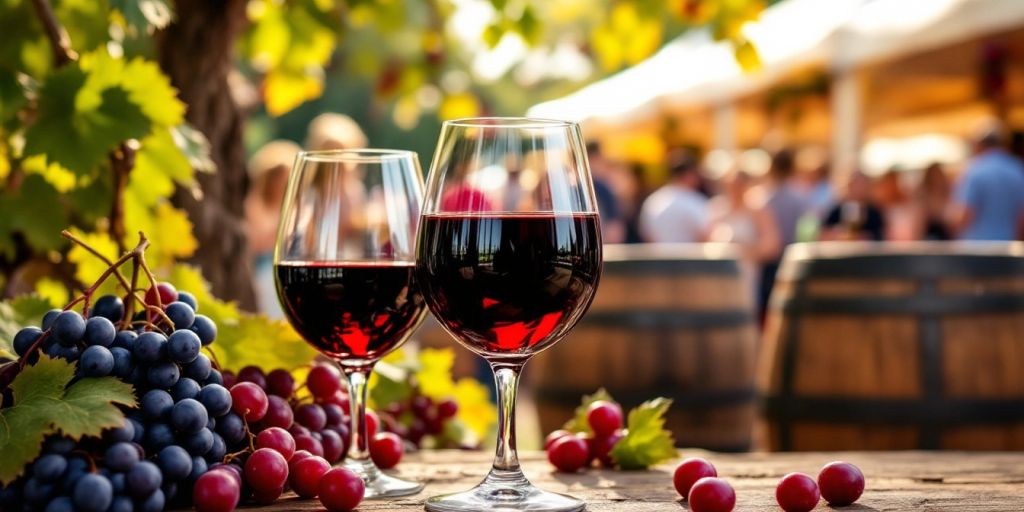Savoring Bacalhau: Portugal’s Beloved Cod Dishes
Bacalhau, or codfish, is a staple in Portuguese cuisine. The Portuguese consume 20% of the world’s cod. There are over 1000 ways to prepare this beloved fish. Here are three must-try dishes.
Bacalhau à Brás
Bacalhau à Brás is a delightful mix of shredded salted cod, onions, and thinly cut fried potatoes. Scrambled eggs are added to the mix. The dish is often garnished with olives and fresh parsley. It’s a favorite among locals and tourists alike.
Bacalhau com Natas
Bacalhau com Natas is the perfect comfort food. This creamy codfish casserole features salted, shredded cod layered with sliced potatoes. A thick, creamy sauce binds it all together. The dish is often topped with a layer of cheese and baked to perfection.
Bacalhau à Gomes de Sá
Bacalhau à Gomes de Sá is a traditional Portuguese dish named after its creator. It includes salted cod, potatoes, onions, and hard-boiled eggs. Black olives and parsley are used as garnishes. This dish is a must-try for anyone wanting to experience authentic Portuguese flavors.
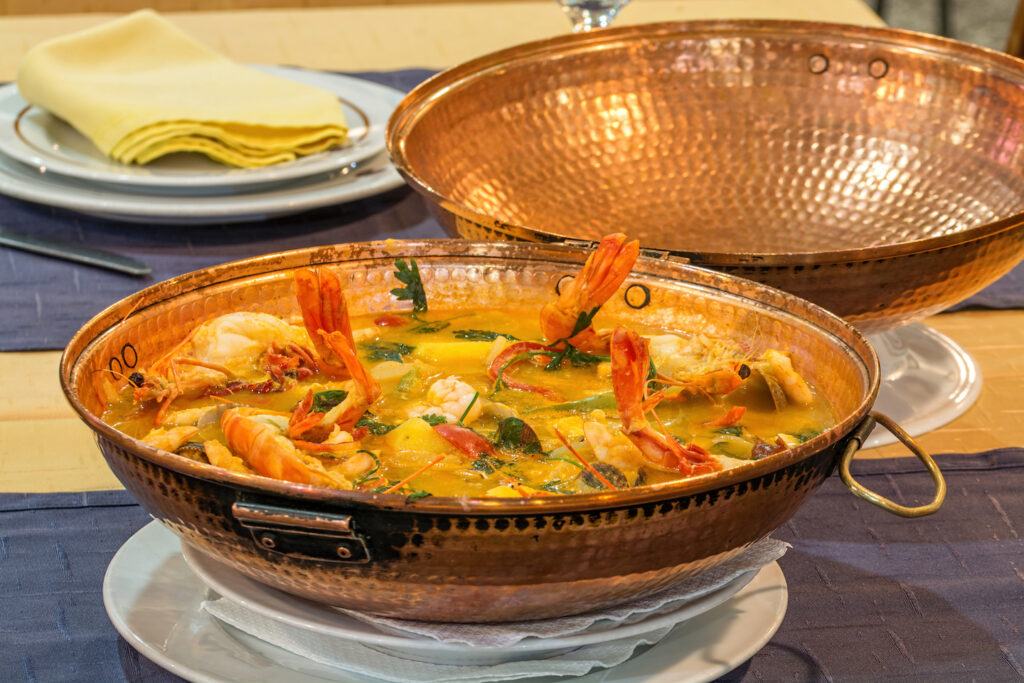
Exploring the Flavors of Cataplana de Marisco
A trip to Portugal isn’t complete without trying Cataplana de Marisco. This dish is typical to the Algarve region but has North African influences. The seafood stew includes prawns, clams, fresh fish, tomatoes, and Mediterranean vegetables. It’s steam-cooked in a copper, clam-shaped dish that folds shut. Enjoy this meal with a chilled, crisp white wine by the Atlantic Ocean.
Indulging in Pastéis de Nata: The Iconic Portuguese Custard Tart
Pastéis de Nata were invented by monks in Lisbon’s Belem district. These custard tarts have become Portugal’s most iconic pastries. The original recipe remains a secret, held by the famous Pasteis de Belem bakery.
Looking for the best custard tarts in Lisbon? Check out these 6 spots, including the oldest pastry shop. Pasteis de Belem is a must-visit for an authentic experience. Other notable places include Manteigaria and Fabrica da Nata.
Pastéis de Nata can be enjoyed hot or cold. They are best served with a smooth black coffee. Sprinkle a bit of cinnamon on top for an extra touch. Enjoy them alfresco in a stylish Lisbon cafe.
Feasting on Francesinha: Porto’s Hearty Sandwich
The Francesinha is a must-try when visiting Porto. This hearty sandwich is a local favorite and a true culinary delight.
Sampling Sardinhas Assadas: Grilled Sardines
Grilled sardines, or sardinhas assadas, are a must-try in Portugal. This dish is especially popular in Lisbon and the Vale do Tejo region. Sardines are seasoned with salt and grilled for about 10 minutes. They are served on bread and paired with potatoes, peppers, and sometimes a tomato salad. Sardines are a beloved local dish, especially in the Algarve. They are typically grilled, sprinkled with salt, and served on rustic bread with a chunk of lemon. The local way to eat sardines is with your fingers, like a cob of corn. Sardines are packed with omega-3s and are a favorite outdoor food in Portugal. They are especially popular during events and festivals. Follow the delicious aroma to find a stand where hundreds of sardines are grilled. In Portugal, sardines are usually grilled and served whole. Peel off the skin to reveal the flaky flesh beneath. Pair with a glass of white or green wine to complete the meal. If you’re visiting Portugal in June, head to Lisbon for the Sardine Festival. You can find grilled sardines at stations all over the city. Otherwise, you’ll find grilled sardines at most Portuguese restaurants between May and October.
Enjoying Caldo Verde: Portugal’s Comforting Kale Soup
Caldo Verde is Portugal’s most famous soup. It is a light and healthy dish. This comforting soup is made with:
- Kale or collard greens
- Potatoes
- Onion
- Garlic
- Olive oil
- Salt and pepper
The soup is often served with slices of chorizo. It pairs well with cornbread, known as broa. You can find Caldo Verde in many restaurants across Portugal. It is a popular choice for a starter or a light meal. This soup is not just tasty; it is also nutritious. Many people enjoy it during local celebrations. If you visit Portugal, make sure to try this beloved dish!
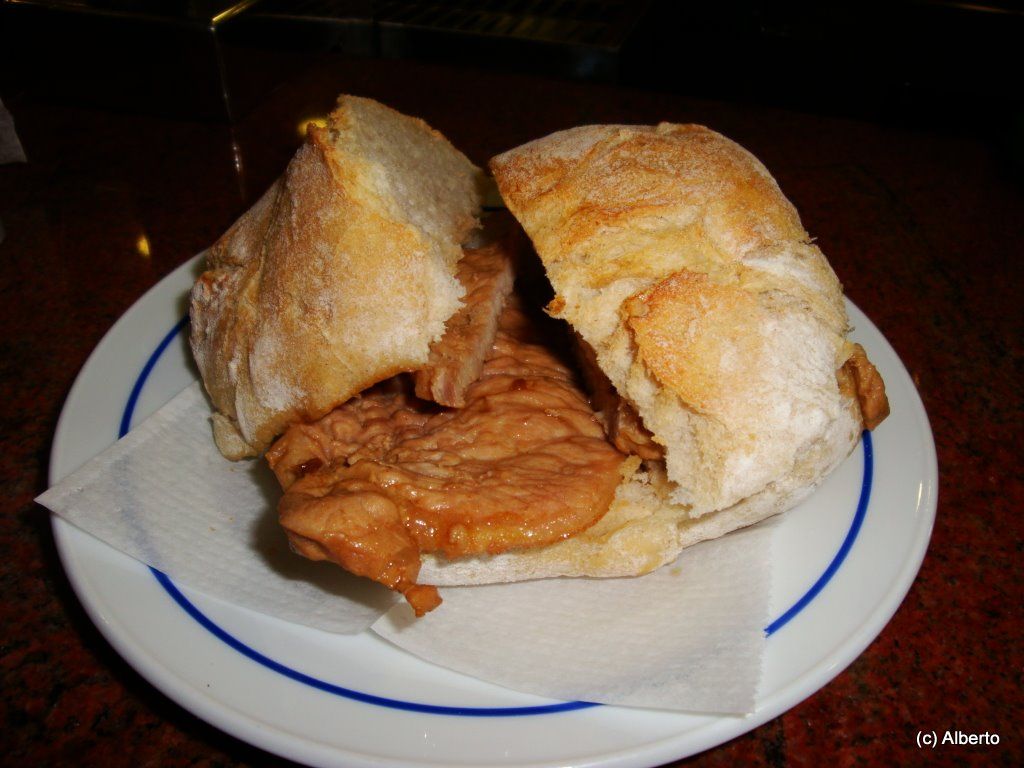
Delighting in Bifanas: Portuguese Pork Sandwiches
Bifanas are a beloved Portuguese street food. These sandwiches feature marinated pork served on a fresh roll. Each region has its own take on the bifana, making it a unique experience wherever you go. Don’t miss out on trying this mouthwatering Portuguese sandwich during your visit.
Street Food Culture
Bifanas are a staple in Portuguese street food culture. You can find them at food stalls, local markets, and small eateries. They are often enjoyed as a quick snack or a light meal.
How They’re Made
To make a bifana, marinate thin slices of pork in white wine, garlic, and spices. Fry the marinated pork until it’s crispy and juicy. Serve it on a fresh roll, and add mustard or hot sauce to taste.
Where to Find the Best Bifanas
Lisbon is famous for its bifanas. Many locals and tourists alike seek out the best bifana in Lisbon. However, you can find delicious bifanas all over Portugal. Each place offers its own unique twist on this classic sandwich.
Tasting Arroz de Marisco: Seafood Rice
Arroz de Marisco is a must-try Portuguese dish you can’t miss. This seafood rice is a delightful mix of flavors. The dish is a blend of seafood, tomatoes, peppers, and rice. The most common seafood used are prawns, mussels, and clams. Some recipes add lobster, crab meat, or other shellfish depending on the season.

Key Ingredients
The key ingredients include fresh seafood, tomatoes, peppers, and rice. Garlic and cilantro add extra flavor. Sometimes, squid ink is used to color the rice black. The seafood is always fresh, coming straight from the ocean.
Cooking Methods
The rice is cooked in a garlicky, cilantro-infused tomato sauce. The seafood is added later to keep it tender. Some variations include peas, onions, and other vegetables. The dish can be made as a risotto, with the rice cooked alongside the other ingredients.
Recommended Restaurants
You can taste top-notch versions at Cantinho do Mar in Praia da Vieira de Leiria. O Faroleiro in Cascais also offers a great version. Marisqueira Rui in Silves is another excellent choice.
Relishing Polvo à Lagareiro: Octopus with Olive Oil
Preparation Techniques
Polvo à Lagareiro is a beloved octopus dish in Portugal. The octopus is first boiled, then roasted in the oven. Its tentacles are seasoned with lots of garlic and olive oil. The dish is served with mashed potatoes and topped with fresh parsley or cilantro.
Flavor Profile
This dish is known for its crispy and tender texture. The combination of garlic and olive oil gives it a rich, savory flavor. The mashed potatoes add a creamy contrast to the octopus.
Best Places to Try
You can find Polvo à Lagareiro at many Portuguese taverns. Some of the best places to try it are Republica do Polvo in Guimaraes and Frade dos Mares in Lisbon.
Sipping on Ginjinha: Portugal’s Cherry Liqueur
History and Tradition
Ginjinha, a cherry liqueur, is a beloved Portuguese drink. It has a rich history and is enjoyed by locals and tourists alike. This drink is often considered Portugal’s better answer to tapas. The tradition of making Ginjinha dates back centuries, and it remains a popular choice today.
How It’s Made
Ginjinha is made by infusing sour cherries in alcohol. The process is simple but results in a flavorful drink. Here are the basic steps:
- Select ripe sour cherries.
- Infuse them in alcohol.
- Add sugar and spices.
- Let it sit for several months.
Best Spots to Enjoy
You can find Ginjinha in many places across Portugal. Some of the best spots include:
- Lisbon: Known for its vibrant Ginjinha bars.
- Porto: Offers a unique twist on the traditional recipe.
- Óbidos: Famous for serving Ginjinha in chocolate cups.
Whether you’re in a bustling city or a quaint town, Ginjinha is a must-try.
Discovering Alheira: The Unique Portuguese Sausage
Alheira is a special sausage from the northeast of Portugal. It comes from Trás-os-Montes and Beira Alta. This sausage is made with different meats and bread. It is seasoned with garlic and chili peppers. The sausage is shaped like a horseshoe. It often includes poultry, veal, duck, and game meats.
Origins and History
Alheira has a rich history. It was created by Jews in Portugal to avoid persecution. They made it look like pork sausage. This helped them blend in with Christians.
Ingredients and Preparation
Alheira uses various meats and bread. Common meats are poultry, veal, and duck. The sausage is seasoned with garlic and chili peppers. It is traditionally smoked using olive or oak wood. This gives it a unique aroma.
Popular Dishes Featuring Alheira
Alheira can be grilled or fried. It is often served with rice and greens. Some people enjoy it with a fried egg on top. It is a must-try when you visit Portugal.
Sweet Treats: Exploring Portuguese Desserts Beyond Pastéis de Nata
Portugal offers more than just pastéis de nata. Discover other delightful desserts that will satisfy your sweet tooth.
Frequently Asked Questions
What is Bacalhau?
Bacalhau is a traditional Portuguese dish made from dried and salted codfish. It’s a staple in Portuguese cuisine with many variations like Bacalhau à Brás, Bacalhau com Natas, and Bacalhau à Gomes de Sá.
Where can I try Cataplana de Marisco?
Cataplana de Marisco can be enjoyed at many seafood restaurants in Portugal, especially in coastal areas. It’s a seafood stew cooked in a special pot called a cataplana.
What are Pastéis de Nata?
Pastéis de Nata are famous Portuguese custard tarts with a crispy pastry shell and creamy custard filling. They are best enjoyed fresh from a local bakery.
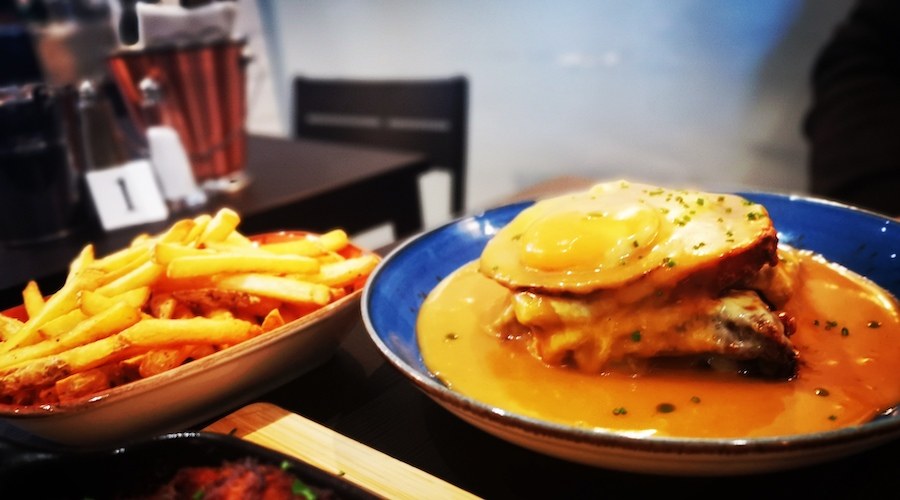
What is Francesinha?
Francesinha is a hearty sandwich from Porto, filled with layers of meat, covered in melted cheese, and topped with a rich tomato and beer sauce. It’s often served with fries and a fried egg on top.
When is the best time to eat Sardinhas Assadas?
The best time to enjoy Sardinhas Assadas, or grilled sardines, is during the summer months, especially around the time of the Feast of St. Anthony in June.
What is Caldo Verde?
Caldo Verde is a comforting Portuguese soup made with kale, potatoes, and chorizo. It’s a popular dish, especially during colder months.
Where can I find the best Bifanas?
Bifanas, or Portuguese pork sandwiches, can be found at street food stalls and casual eateries throughout Portugal. Some of the best are said to be in Vendas Novas.
What is Ginjinha?
Ginjinha is a traditional Portuguese cherry liqueur. It’s often enjoyed as a shot, sometimes served with a piece of the fruit in the glass. You can find it in bars and specialized shops.

